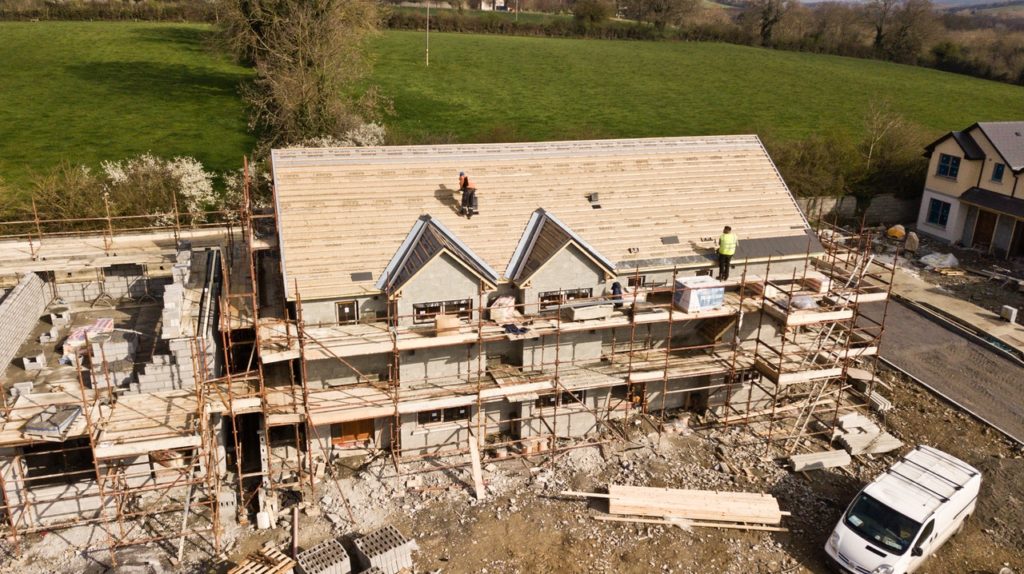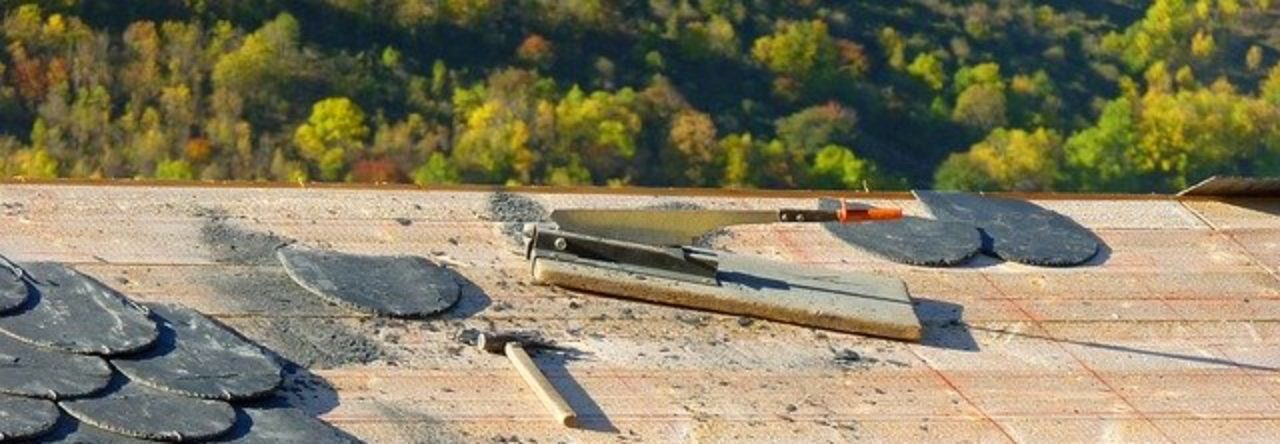
This article will give you the basic steps on roofing or re-roofing a house with an asphalt shingle roof. Unless you have done some roofing before, we strongly suggest that you don’t try this yourself. You might go to all the trouble and then find out you need to start over.
Check the Old Roof First
Why? Because you need to determine if there is one layer of roofing or two. If there is only one layer, you can simply install the new layer on top. If there are two layers already, you will need to remove all the roofing material and start from scratch. Presumably obviously, a second layer is only an option with an asphalt shingle roof. You can’t do this with tile or slate or standing seam metal roofs. Another blog post here talks about what to look for to see if you need a new roof or can just do repairs. Click here.
Safety First
Unless you have a rancher that is only one story, there is a safety issue from falling. Even a one story fall can potentially be fatal. Here are some things to do:
- Make ladders stable with a stabilizer bar or by tying them off
- Only work on a dry roof, never a wet roof
- Wear boots with soft soles for good traction
- Keep everything as clean as possible – roofing debris, tools, dirt
- Use safety equipment – safety glasses, safety net, safety harness-lanyard system
Roof Physics
Gravity is key. The design of a good roof is based on the fact that water will run downhill. The shingles are overlapped so that water will run down and off the house and not into the house. That is why shingled roofs with very little slope tend to have problems and flat roofs need a different technology. Strong winds can blow water up under the shingles or ice damming can cause water to be blocked and move upwards. Steps to prevent these issues are listed below.
Roof Deck Preparation
When a roofer talks about a deck, he is not talking about a place to sit around, relax and have a beer. The deck is the wood (typically plywood or Oriented Strand Board) that the shingles are attached to. If there are any wet or rotted areas they will need to be replaced. There should also be no gaps. It should be smooth and flat.
Bottoms Up
No, not in terms on drinking. You work from the lowest point on the roof and then move up from there until you reach the peak of the roof. You first need a drip edge to prevent any water from wicking upward. In colder climates, there should be also be an ice and water protector membrane applied to the bottom 2 feet of the roof to prevent problems from ice damming.
Underlayment Layer
This is a layer of either synthetic material or asphalt-saturated felt. It typically comes in rolls 4 feet wide that is laid out horizontally on the roof. Put the first layer down at the bottom of the roof and work upwards, overlapping by 2 inches.
Flashing
Flashing is used in places where leaks usually occur. These are places where a roof butts up against a wall or chimney, or in valleys. Flashing is usually metal and should be put in place before the shingles. Snap a chalk line 6 inches in on the flashing and when you put down the shingles, trim to the chalk line.
Other places where flashing or special rubber barriers are needed are dormers and skylights as well as plumbing stacks and vents.
Finally, the Shingles
As indicated earlier, you start at the bottom and work up, always overlapping. Most of the field of the roof are strips of the same shingles. However, the first layer is specially made to be resistant to the wind. Then use the regular shingles as you move up. The nailing is important. The nail needs to be flush to the shingle and not poking up but at the same time, they shouldn’t be over-nailed and tear the fabric of the shingle.
Ridge Caps and Hips
When you get to the top of the roof you need another specialized shingle. You can’t bend a regular shingle over the top. They make special shingles for the roof top/ridge.
Hopefully this gives you a better idea of what goes into installing an asphalt shingle roof.
